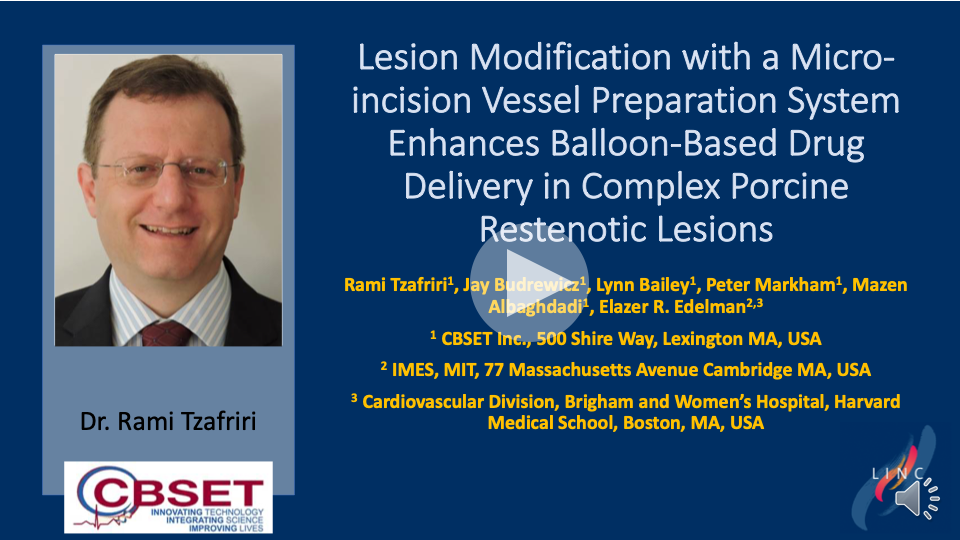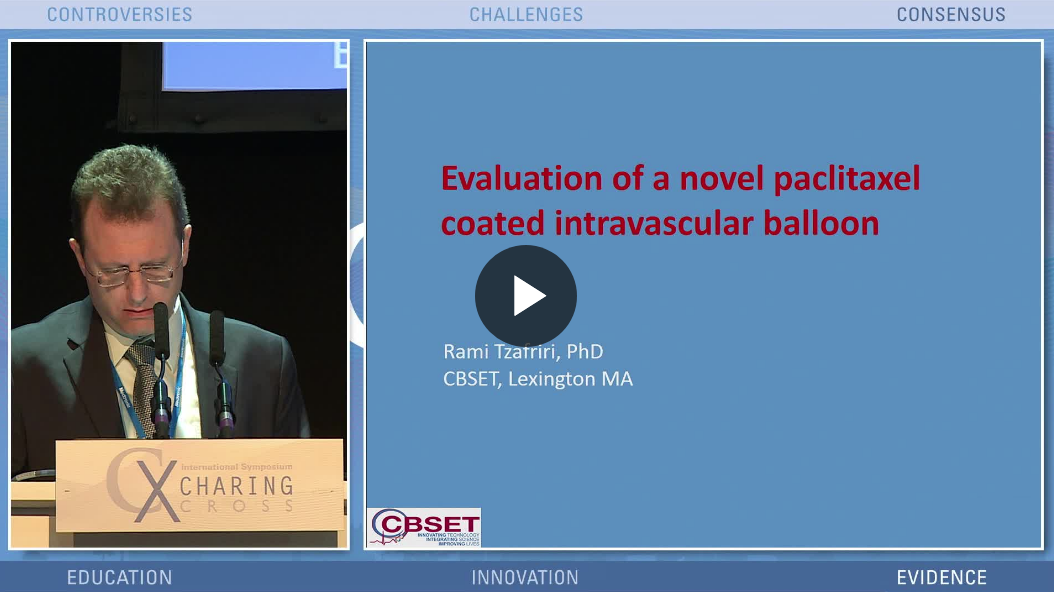 SINCE 2009...Dr. Rami Tzafriri has provided scientific leadership to CBSET’s cutting-edge translational research programs, leveraging CBSET’s strengths in minimally invasive interventions, histopathology, imaging, bioanalysis and computational modeling to accelerate product development. He also leads CBSET’s educational and technology differentiations mission, and liaises with key opinion leaders.
SINCE 2009...Dr. Rami Tzafriri has provided scientific leadership to CBSET’s cutting-edge translational research programs, leveraging CBSET’s strengths in minimally invasive interventions, histopathology, imaging, bioanalysis and computational modeling to accelerate product development. He also leads CBSET’s educational and technology differentiations mission, and liaises with key opinion leaders.
THINGS YOU SHOULD KNOW ABOUT DR. RAMI TZAFRIRI
He is one of a rare breed: quantitative translational biomedical researcher.
Quantitative translational research is an interdisciplinary field integrating multiple experimental and computational modalities. Rami holds an MSc degree in Physics, and received a PhD in Computer Science from Hebrew Univ. of Jerusalem for his research on biodegradable controlled release devices as localized therapies for gum disease and cancer. He later held a post-doctoral research position in Dr. Elazer Edelman’s lab at MIT, focused on developing ex vivo and computational models to examine how blood flow and receptor-ligand interactions affect drug distribution in arteries and myocardium. His experience in directing complex quantitative research programs in a fast-paced CRO environment and his ability to communicate CBSET’s novel findings to R&D scientists and clinicians make him a perfect Director of Research and Innovation to align CBSET’s vision of growth through investment in scientific collaboration, technology advancement, and novel method development.
He is a visionary.
Rami joined CBSET in 2009 as a Principal Scientist focusing on development of computational and experimental methods for predicting the local pharmacokinetics of novel drug eluting stent designs. In 2016 he assumed his current position as Director of Research & Innovation. His work has led to landmark insights, such as: the first published preclinical demonstration of lesion preparation enhanced drug delivery to calcified human arteries; novel imaging methods for visualizing balloon-delivered coating onto arterial surfaces; and, computational models by which to interpret and leverage such findings. He has published and presented extensively on CBSET’s behalf and has served as Faculty in over 10 international conferences. His series of first-authored CBSET publications on catheter-based denervation provide a novel integrated experimental/computational paradigm for predicting the influence of procedural and anatomical parameters on their performance, and were highlighted by the editors of JACC, Science Translational Medicine, and Hypertension.
He is passionate.
"I enjoy collaborating with industry and academic partners, and key opinion leaders,” says Rami. “Medical therapies are inherently complex and best understood through integration of quantitative experiments with mechanistic computational modeling. My role and the resources I am afforded allow us to use this integrative paradigm in an expanding range of therapeutic areas for the benefit of our Sponsors and advancement of innovative therapies. I am especially excited about our fellowship and intern programs, which accelerate development of novel in vivo and bench models, image analysis, and 2D and 3D computational models. These efforts help CBSET’s Sponsors transform their ideas into breakthrough therapies while also providing invaluable opportunities for young scientists and medical fellows to participate in generating high-profile translational research publications that impact medical innovation.”
News and Publications

Pharmaceutics: Drug Loss at Arterial Bends Can Dominate Off-Target Drug Delivery by Paclitaxel-Coated Balloons

Annals of Biomedical Engineering: A Novel In Silico–Ex Vivo Model for Correlating Coating Transfer to Tissue with Local Drug-Coated Balloon-Vessel Contact Pressures

ICI 2024: Influence of DCB Design and Procedural Parameters on Drug Delivery

ICI 2024: The Common Hepatic Artery is a Rich Target for Sympathetic Denervation

TCT 2024: Drug-Loss at Arterial Bends Can Dominate Off-Target Drug Delivery by Paclitaxel-Coated Balloons

TCT 2024: Twelve Week Safety and Efficacy of a Novel Extravascular Bi-lateral Renal Denervation Device in a Porcine Model at Nominal Dose

ICI 2024: Porcine Model of Catheter Based Treatment of Pulmonary Embolization

Bioengineering: Cardiovascular Tissue Engineering Models for Atherosclerosis Treatment Development

TCT 2023: Imaging-Based Evaluation and Differentiation of Vessel Preparation Technologies in a Porcine Model of Peripheral Artery Stenosis

TCT 2023: Ultrasound-enhanced clot thrombolysis in a porcine model of pulmonary embolism

Annals of Biomedical Engineering: Investigating Balloon-Vessel Contact Pressure Patterns in Angioplasty: In Silico Insights for Drug-Coated Balloons

EuroIntervention: Histological examination of renal nerve distribution, density, and function in humans

EuroPCR 2023: Ultrasound-enhanced clot thrombolysis in a porcine model of pulmonary embolism

ICI 2022: Image Guided Renal Denervation – The Time Is Now

Scientific Reports: Morphometric analysis of the human common hepatic artery (CHA) reveals a rich and accessible target for sympathetic liver denervation

Annual International Conference of the IEEE Engineering in Medicine & Biology Society: An in silico trials platform for the evaluation of effect of the arterial anatomy configuration on stent implantation

LINC 2021: Lesion Modification with a Micro-Incision Vessel Preparation System Enhances Balloon-Based Drug Delivery in Complex Porcine Restenotic Lesions

Biomaterials: Balloon-based drug coating delivery to the artery wall is dictated by coating micro-morphology and angioplasty pressure gradients

Annu Int Conf IEEE Eng Med Biol Soc: Design and implementation of in silico clinical trial for Bioresorbable Vascular Scaffolds

Circulation: Mortality and Paclitaxel-Coated Devices: An Individual Patient Data Meta-Analysis





